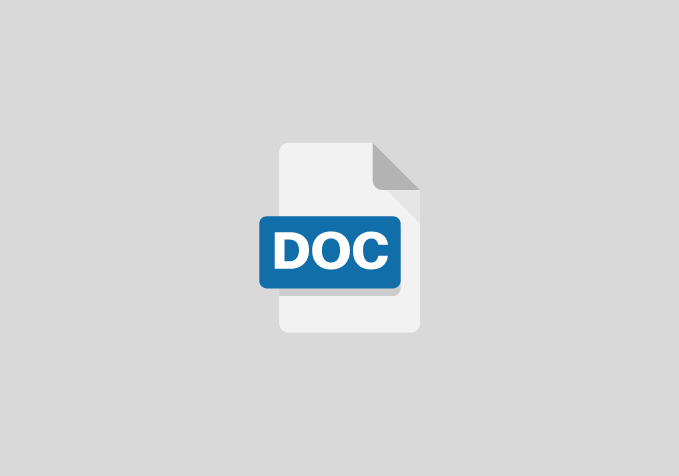Nutritional Analysis of Banana (Musaspp)
CHAPTER ONE
OBJECTIVE OF THE STUDY
The objective of the study is to identify the nutritional components of banana.
CHAPTER TWO
LITERATURE REVIEW
Classification Family: Musaceae Latin Name: Musa SPP
English Name: Banana (Simmonds, 1987).
Description
The banana plant, Musa paradisiaca, is the world’s largest herbaceous perennial plant. It is grown for its fleshy, curved banana fruit. The plant is tall, tropical and tree-like with a sturdy main pseudo stem (not a true stem as it is made of rolled leaf bases) with the leaves arranged spirally at the top. The leaves are large blades with a pronounced Urban midrib and obvious veins. They can reach up to 2.7 m (8.9 ft) in length and up to 0.6 m (2.0 ft) in width. Each pseudo stem produces a group of flowers which may also be called the ‘banana heart’ from which the fruits develop in an hanging cluster. The banana fruits are comprised of a protective outer layer, or skin, with numerous long, thin strings that run between the skin and the edible inner portion. The seeds are tiny black specks running through the center of the fruit. In commercial plantations, the parent banana plant dies after harvest and is replaced with a daughter plant. However, a plantation can grow for 25 years or more if managed properly (Ogazi, 1996).
CHAPTER THREE
MATERIALS AND METHODS
Eight ripe banana varieties used for table purpose were selected for the study. The varieties selected were Palayankodan (AAB), Rasakadali (AB), Robusta (AAA), Poovan (AAB), Nendran (AAB), Kadali (AA), Red banana (AAA), Padatti (AAB). The banana varieties were procured at the time when the characteristic fruit colour developed for each type. They were collected from Instructional Farm, College of Agriculture, Vellayani and local markets of Trivandrum. Total soluble solids (TSS), acidity, total carbohydrate, protein, total minerals, sodium, potassium, and calcium were selected for determining chemical and nutrient composition of selected banana varieties.
Estimation of total soluble solids
Advertisements
The total soluble solids in the bananas were estimated by means of refractometer as 0 Brix in 0.1% graduations (AOAC, 2000).
Estimation of acidity and Total carbohydrate
The acidity and carbohydrate content of banana samples were estimated by the method described by Sadasivam and Manickam (2008).
Estimation of protein
The nitrogen content of banana samples was estimated by micro Kjeldahl’s wet digestion method. The values of nitrogen contents were multiplied by the factors 6.25 to get crude protein content (AOAC, 2000).
Estimation of total minerals
Total mineral content was estimated as per the method described by Raghuramalu et al. (1983).
CHAPTER FOUR
RESULTS AND DISCUSSION
TSS can serve as a useful index in the determination of fruit maturity and ripeness. According to Lu (2004), total soluble solid (TSS) is an important quality attribute for many fresh fruits during ripening.
In the present study, highest TSS content was observed for variety Kadali (23.900 Brix) and the lowest for variety Padatti (17.830 Brix) (Table 1). The study is in agreement with the findings of Sandipkumar and Shanmugasundaram (2015) who had found that TSS content was increased up to 22.240 Brix during the period of storage in Monthan banana, and the magnitude of increase of total soluble solids in banana is dependent on cultivar.
CHAPTER FIVE
CONCLUSION AND RECOMMENDATION
The banana is of great nutritional value. It is a good source of calories, vitamins and minerals. People of South India, traditionally use banana as a wholesome food. Chemical and nutrient composition of banana varieties varied according to the variety, cultivation practices, weather, type of soil, degree of maturity and the condition of ripeness. The present study indicated that banana is a highly nutritious fruit. It is an excellent source of potassium and carbohydrate and a good food for all ages of people. In vitro studies and animal model studies and clinical studies show that banana act as a food medicine for treatment of various disease like hypertension, ulcers, diarrhoea, Alzheimer’s disease due to its chemical and nutrient contents.
Recommendations
- Provide clean prepared places for supply and selling of banana fruit.
- Consume should avoid consumption of over ripe banana which may be contamination with pathogenic According to the obtained results we recommend not to eat the opened over riped banana because of the presence of pathogenic microorganisms.
References
- Adeniji, T.A., Barimalaa, I.S. &Achinewhu, S.C. (2006). Evaluation of bunch characteristics and flour yield potential in black Sigatoka resistant plantain and banana hybrids. Global Journal of Pure and Applied Science, 12, 41–43.
- Aljedah.J. H, Robinson. R. V. (2002) Nutritional Value and Microbiological Safety of Fresh Fruit Juices sold through Retail Outlets Qatar. Pakistan. Jornal of Nutrition 1 (2): 79-81.
- AOAC (1984).Association of official Analytical chemists. Official Methods of Analysis,14th ed. North Nineteenth Street, Suite 210 Arlington, Virginia 22209, USA.
- AOAC (2003).Association of official Analytical chemists.Official Methods ofAnalysis, 17thed. Arlington, Virginia, USA.
- Beuchat, L. R. (2002). Ecological factors influencing survival and growth of human pathogens on raw fruits and vegetables. Microbes Infect. 4:413-423.
- Chandler S. (1995).The nutritional value of banana.in Banana and plantations (S.Gowen, ed). Chapman and Hall, Uk. Pp.;
- 486-480
- Daniel’sA. J. Jenny C. Karamura. D. and Tomekpe, K. (2001). Musalogue:a catalogue of Musa germplasm. Diversity in the genus Musa (E. Arnaud and S. Sharrock, compil.).International Network for the Improvement of Banana and Plantain (INIBAP), Montpellier,France.<www.inibap.org/publications/musalogue.pdf
- >.3-336.
- FAO. (1989). Prevention of postharvest food losses; fruits, vegetables, and root crops; and training manual. FAO. Code 17, J11: 1-3.
- FAO.(2010):journal of Scientific and industrial research ,vol,69.323-329.
- Harrigan, W. F.(1998). Laboratory Methods in Food Microbiology 3rd edition, Gulf Professional Publishing,USA.
- Hui, Y. (2006). Hand Book of Fruits and Fruit processing. Published by Black well. USA.
- Johnson, P.N.T,Brennan, J.G.andAddo-Yobo, F.Y. (1998).Air drying characteristics of plantain (Musa AAB). Journal of food Engineering, 31,233-242.


